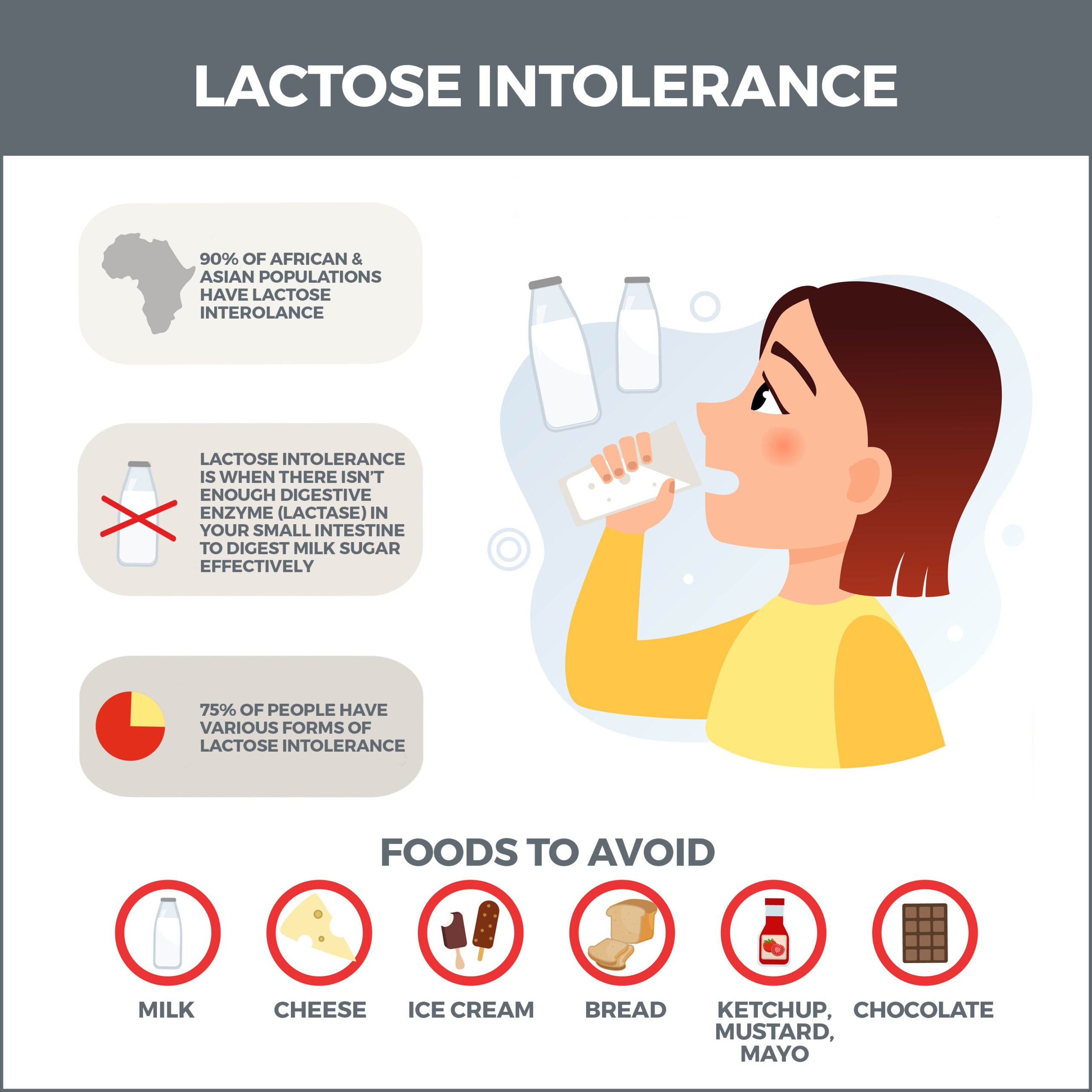As an Amazon Associate CoffeeXplore.com earns from qualifying purchases.
Coffee & Lactose Intolerance: Is It The Coffee?
That sudden, uncomfortable feeling after your morning coffee can be frustrating and confusing. You start to question everything—is it the beans, the brew, or something more? For many, the nagging question becomes, “Can coffee cause lactose intolerance?” You’re looking for a clear answer to reclaim your favorite morning ritual without the digestive distress that follows.
No, coffee itself does not cause lactose intolerance. The digestive discomfort you experience is almost always due to the lactose in the milk, cream, or other dairy products you add to your coffee, not the black coffee itself.
This guide is designed to clear up the confusion and provide a definitive answer. Leveraging an in-depth analysis of digestive health data and the biological mechanisms of this condition, we will unpack the real reason behind your post-coffee discomfort. This guide unpacks the critical difference between the coffee and its additives, explains how caffeine can play a role in your symptoms, and provides proven, practical solutions to help you enjoy every single cup, worry-free.
Key Facts
- Coffee is Naturally Dairy-Free: Pure, black coffee is brewed from roasted coffee beans and water. According to its composition, it contains no lactose, the sugar found in milk that triggers symptoms of lactose intolerance.
- Lactose Intolerance is an Enzyme Deficiency: As highlighted by health authorities like the NHS, this condition is caused by the body’s inability to produce enough of the enzyme lactase, which is necessary to break down lactose. Coffee consumption does not affect lactase production.
- Dairy Additives are the Real Culprit: The bloating, gas, and diarrhea experienced after a milky coffee are a direct result of the lactose present in the milk, cream, or even some commercial flavorings added to the beverage.
- Caffeine Can Amplify Symptoms: While it doesn’t cause the condition, caffeine is a natural stimulant with a laxative potential. It can speed up digestion, which may exacerbate or accelerate the symptoms of an underlying intolerance to the dairy in your cup.
- Viable Solutions are Readily Available: Individuals with lactose intolerance can easily enjoy coffee by switching to lactose-free dairy milk or a wide variety of plant-based, dairy-free alternatives such as oat, almond, or soy milk.
The Direct Answer: Does Coffee Itself Cause Lactose Intolerance?
No, coffee itself does not cause lactose intolerance. Pure black coffee is dairy-free and does not contain lactose. The condition is caused by a deficiency of the lactase enzyme, not by anything in coffee. This is the foundational fact that separates myth from reality. Many people mistakenly believe coffee is the source of their digestive issues when, in fact, the pure beverage is not the problem.

The confusion arises because the symptoms often appear right after a coffee break. However, based on the biological definition of the condition, the cause-and-effect relationship is with dairy, not coffee.
Pure black coffee is a simple beverage. It’s made from roasted and ground coffee beans and water. It’s what we add to it that often creates the problem.
To be perfectly clear, here is what black coffee contains versus what it lacks:
- Water: The primary component of brewed coffee.
- Caffeine: A natural stimulant.
- Antioxidants and Oils: Natural compounds from the coffee bean.
- What it Lacks: Lactose, milk proteins, and any form of dairy.
So if it’s not the coffee, what’s really happening when you feel discomfort after your morning latte? The answer lies in understanding the true culprit behind your symptoms.
Understanding the Real Culprit: It’s What You Add to Your Coffee
The digestive distress experienced after drinking coffee with milk is caused by the lactose present in the milk or creamer, not the coffee itself. The body’s inability to produce enough lactase enzyme leads to symptoms like bloating, gas, and stomach cramps. When you have a lactase deficiency, your body can’t properly digest the sugar in milk, and this sets off a chain reaction in your digestive system.
Here’s the step-by-step process of what happens when you have lactose intolerance and drink a coffee with milk:
- Consumption: You drink your coffee, which contains milk or cream. The lactose from the dairy travels to your small intestine.
- Lack of Enzyme: In a person without lactose intolerance, the lactase enzyme would break down the lactose into simpler, absorbable sugars (glucose and galactose). However, in an individual with the condition, there isn’t enough lactase to do this job effectively.
- Fermentation: The undigested lactose moves into the large intestine. Here, gut bacteria begin to ferment it.
- Symptom Onset: This fermentation process produces gases (like hydrogen, methane, and carbon dioxide) and fatty acids. This buildup is what leads to the classic and uncomfortable symptoms: bloating, painful gas, stomach cramps, and often diarrhea.
Pro Tip: “Remember, even a small splash of milk can be enough to trigger symptoms in highly sensitive individuals.”
The amount of lactose in common coffee additives can vary, but any amount can be problematic for someone with high sensitivity.
| Additive | Contains Lactose? |
|---|---|
| Whole/Skim Milk | Yes |
| Half-and-Half | Yes |
| Heavy Cream | Yes |
| Sweetened Condensed Milk | Yes |
| Evaporated Milk | Yes |
| Black Coffee | No |
| Almond/Oat/Soy Milk | No |
This table clearly illustrates that the problem isn’t inherent to coffee, but to the dairy products frequently mixed with it.
What is Lactose Intolerance? A Quick Refresher
Lactose intolerance is a digestive disorder caused by the inability to digest lactose due to a shortage of the enzyme lactase in the small intestine. It is a common condition and is not the same as a milk allergy, which involves the immune system. Understanding the different types can help clarify why it might seem to develop suddenly. Based on established medical facts from sources like NHSinform.scot, there are a few primary types:
- Primary Lactase Deficiency: This is the most common form. It’s a genetically inherited condition where your body’s production of lactase naturally decreases from childhood into adulthood. This is why many people find they can no longer tolerate milk products as they get older.
- Secondary Lactase Deficiency: This type occurs when an injury, illness, or surgery damages the small intestine, leading to a temporary drop in lactase production. Conditions like gastroenteritis, celiac disease, or Crohn’s disease can be triggers. In some cases, once the underlying issue is treated, the intolerance may improve.
- Congenital Lactase Deficiency: A very rare, inherited condition where a baby is born with little to no ability to produce lactase from birth.
- Developmental Lactase Deficiency: This can occur in premature babies whose small intestines are not yet fully developed. This condition is usually temporary and improves as the infant matures.
Symptoms for all types typically include gas, bloating, stomach cramps, and diarrhea after consuming foods or drinks containing lactose. Does one of these types sound familiar to your experience?

The Caffeine Connection: Why Coffee Exacerbates Symptoms
Caffeine is a stimulant with a laxative effect. It can accelerate bowel movements and worsen existing symptoms of lactose intolerance, making it feel like the coffee is the direct cause when it is actually aggravating the reaction to the dairy. This is the “aha!” moment for many people who wonder why they only seem to have issues when they drink coffee with milk, but not when they eat other dairy products like cheese or yogurt.
The connection isn’t that coffee can cause lactose intolerance; it’s that coffee can make an existing, perhaps mild, case of lactose intolerance feel much more immediate and severe.
Here is the cause and effect breakdown:
Caffeine stimulates the digestive system, causing the muscles in your intestines to contract more frequently and forcefully. This effect is known as increased peristalsis. If undigested lactose from milk is already present in your gut, these powerful contractions can push it through your system much faster than usual. This rapid transit time means there’s even less opportunity for any available lactase to do its job, and it rushes the fermenting lactose into the large intestine.
Think of it like this: caffeine presses the ‘fast-forward’ button on your digestion. If there’s already trouble brewing from lactose, you’re going to feel it much quicker. This can turn what might have been mild bloating an hour later into sudden cramps and an urgent need for the bathroom just minutes after finishing your cup. This powerful amplifying effect is why so many people incorrectly conclude that the coffee itself is the problem.
How to Enjoy Your Coffee Without the Discomfort: A Practical Guide
To avoid symptoms, switch to dairy-free alternatives like almond, oat, or soy milk. You can also try lactose-free dairy milk, which contains the lactase enzyme needed for digestion. Testing black coffee first can confirm if the dairy additive is the problem. Taking control of your coffee routine is simple and allows you to enjoy your favorite beverage without any discomfort.
A great first step is to conduct a simple self-test to pinpoint the issue with certainty:
- Go Black for a Week: For a few days, drink your coffee completely black, with no milk, cream, or sugar. If your digestive symptoms disappear entirely, you have strong evidence that the additive, not the coffee, was the problem.
- Try Lactose-Free Dairy: If you miss the creamy texture of dairy, switch to lactose-free milk for your next step. This is real dairy milk, but the lactase enzyme has been added to it, pre-digesting the lactose for you. If you tolerate this well, your diagnosis is almost certainly lactose intolerance.
- Experiment with Non-Dairy: Explore the world of dairy-free alternatives. This is where you can find a new favorite that works perfectly for your body and your taste buds.
Quick Fact: Many coffee shops now offer a wide range of these alternatives, though sometimes for a small upcharge.
Here is a look at some of the best dairy-free alternatives and how they perform in coffee:
| Milk Alternative | Taste Profile/Notes | Pairs Well With… |
|---|---|---|
| Oat Milk | Creamy, naturally sweet, thick texture. | Lattes, cappuccinos (froths well). |
| Almond Milk | Slightly nutty, thinner consistency. | Iced coffee, regular drip coffee. |
| Soy Milk | Neutral to slightly sweet, high in protein. | Almost any coffee, froths very well. |
| Coconut Milk | Distinct coconut flavor, very creamy. | Dark roasts, iced coffee, flavored lattes. |
| Pea Milk | Earthy, rich, and surprisingly creamy. | Espressos and dark roast coffees. |
By making one of these simple switches, you can completely eliminate the root cause of your discomfort and continue enjoying your coffee ritual.
Top 5 Dairy-Free Milk Alternatives for Your Coffee
Choosing the right non-dairy milk can transform your coffee experience. The best non-dairy milk alternatives for coffee include oat milk (for creaminess), almond milk (for a nutty flavor), and soy milk (for high protein and good frothing). Here’s a deeper dive into the top five options that are perfect for anyone looking to avoid dairy.
- Oat Milk
Oat milk has become the gold standard in specialty coffee shops for good reason. It has a naturally sweet flavor and a rich, creamy texture that closely mimics dairy milk.- Taste: Mild and slightly sweet.
- Creaminess: Excellent, very similar to whole milk.
- Frothing Ability: Steams beautifully, creating a stable and velvety microfoam perfect for latte art.
- Almond Milk
A classic and widely available choice, almond milk offers a lighter alternative with a distinct flavor profile. It’s lower in calories and has a thinner consistency.- Taste: Nutty and light.
- Creaminess: Low to moderate, can sometimes be watery.
- Frothing Ability: Can be difficult to froth; barista-blend versions perform much better. Best for iced coffees or adding a splash to drip coffee.
- Soy Milk
The original dairy-free powerhouse, soy milk remains a fantastic option. It’s packed with protein, which helps it behave very similarly to dairy milk when heated.- Taste: Can range from neutral to a distinct bean-like flavor depending on the brand.
- Creaminess: Good, provides a nice body to coffee.
- Frothing Ability: Very good, produces a dense and durable foam ideal for cappuccinos.
- Coconut Milk
For those who enjoy a hint of tropical flavor in their cup, coconut milk is a delicious choice. It’s known for its rich and creamy texture.- Taste: Prominent coconut flavor.
- Creaminess: High, especially from canned versions (though beverage cartons are more common for coffee).
- Frothing Ability: Decent, but can sometimes separate. Works wonderfully in iced drinks and mochas.
- Pea Milk
A newer entrant to the market, pea milk (made from yellow split peas) is a surprisingly excellent choice for coffee. It’s often fortified with nutrients and has a remarkably neutral flavor profile.- Taste: Neutral and slightly earthy, less overpowering than other alternatives.
- Creaminess: Very creamy and smooth, similar to half-and-half.
- Frothing Ability: Excellent, it froths well and holds its structure, making it great for hot espresso drinks.
What’s your go-to non-dairy milk for coffee? Finding the perfect dairy-free alternative can make all the difference. To simplify your search, consider exploring some of the top-rated options available online.
FAQs About Coffee and Lactose Intolerance
Here are direct answers to some of the most frequently asked questions about the connection between coffee, digestion, and lactose intolerance.
Am I lactose intolerant if I have to poop right after coffee?
Not necessarily. Coffee, due to its caffeine content, is a natural stimulant that can cause an urge to poop. This is a common reaction for many people, even those without any food intolerances. Caffeine can increase gut motility and stimulate contractions in the colon. However, if this urge is consistently accompanied by other symptoms like gas, bloating, stomach pain, or diarrhea, it could be a sign that the caffeine is exacerbating an underlying intolerance to the milk or cream you added to your coffee.
Can you suddenly become lactose intolerant?
Yes, lactose intolerance can develop over time, making it feel sudden. The most common type, primary lactase deficiency, is a genetic condition where your body’s ability to produce the lactase enzyme naturally declines as you age. This is why many adults who could drink milk without issue as children find they can no longer tolerate it. Additionally, a temporary form called secondary lactase deficiency can be triggered by an illness, infection, or injury to the small intestine, which can also make the onset seem abrupt.
What are the worst foods for lactose intolerance?
The worst foods for lactose intolerance are those highest in lactose, primarily milk and other fresh dairy products. While individual tolerance levels vary, products that are typically the most problematic include fresh milk (skim, whole), heavy cream, light cream, ice cream, and soft cheeses like cottage cheese or ricotta. Hard, aged cheeses like cheddar or Parmesan have much lower lactose content and are often well-tolerated in small amounts.
Can I drink any coffee if I’m lactose intolerant?
Yes, you can absolutely drink coffee if you are lactose intolerant. The key is to drink it black or use lactose-free or dairy-free alternatives instead of regular milk or cream. Pure coffee contains no lactose. By simply replacing the dairy component with a safe alternative like almond milk, oat milk, soy milk, or a specially formulated lactose-free creamer, you can enjoy any coffee drink you like without triggering any uncomfortable digestive symptoms.
Final Summary: It’s Not the Coffee, It’s the Creamer
The widespread confusion about whether coffee can cause lactose intolerance is understandable, but the conclusion is clear: the coffee itself is innocent. The discomfort, bloating, and digestive rush you feel after a creamy latte are not caused by the coffee but by the lactose in the dairy you add to it. The caffeine in coffee acts as an accelerator, intensifying and speeding up the symptoms of an underlying intolerance that might otherwise be less noticeable.
By understanding this crucial distinction, you can easily reclaim your morning ritual. The solution isn’t to give up coffee, but to change what you put in it.
- Coffee is Not the Cause: Pure, black coffee is naturally free of lactose and does not cause or create lactose intolerance.
- Lactose is the Trigger: The sugar (lactose) in milk, cream, and other dairy additives is the true culprit behind your digestive symptoms.
- Caffeine is the Amplifier: The stimulant effect of caffeine can exacerbate symptoms by speeding up your digestive system, making the reaction to lactose feel more immediate and severe.
Take control of your coffee routine with this knowledge and find the perfect, comfortable cup for you! By switching to delicious dairy-free alternatives like oat or almond milk, or using lactose-free dairy products, you can enjoy all the coffee you want without any of the discomfort.
Last update on 2025-12-13 / Affiliate links / Images from Amazon Product Advertising API

